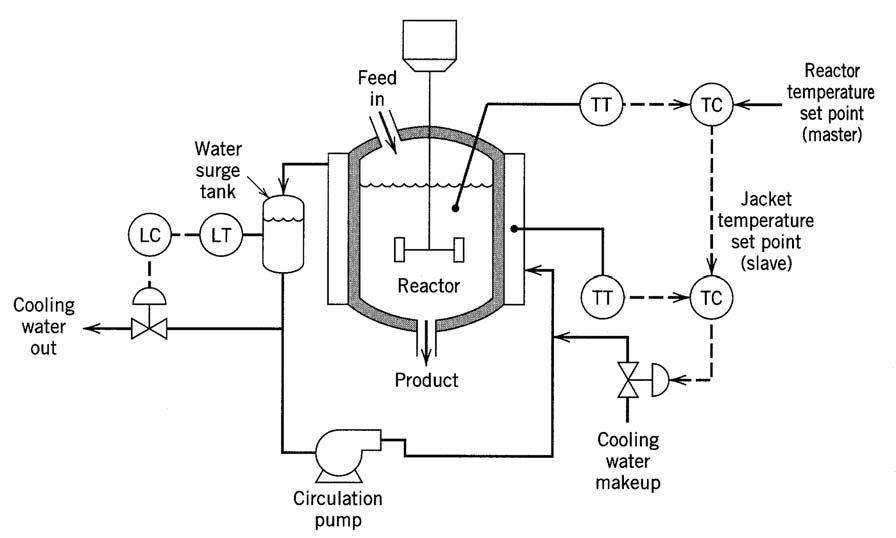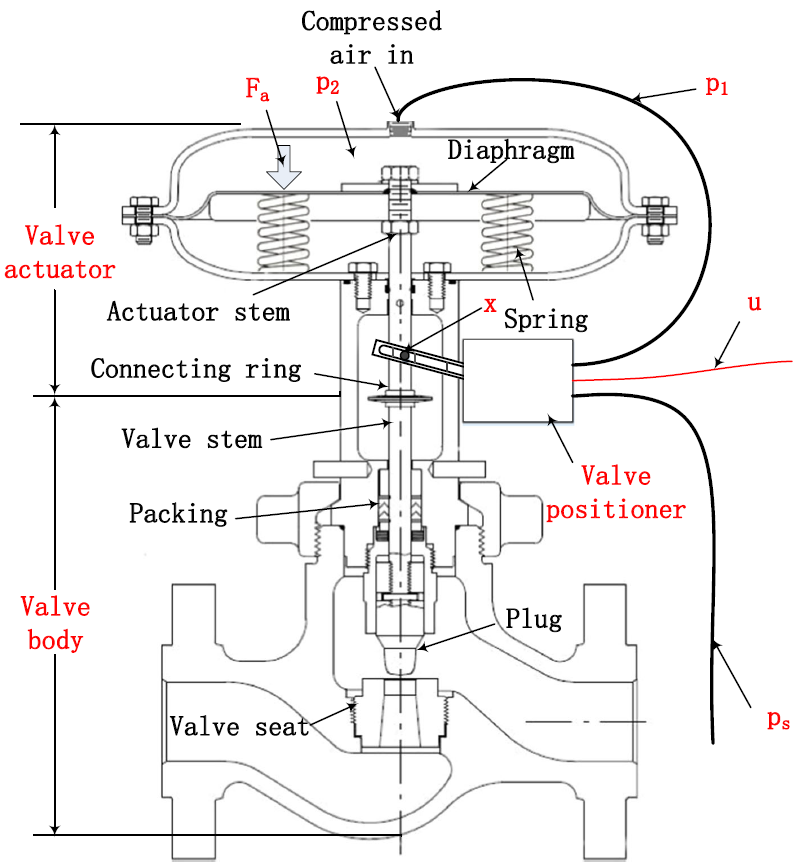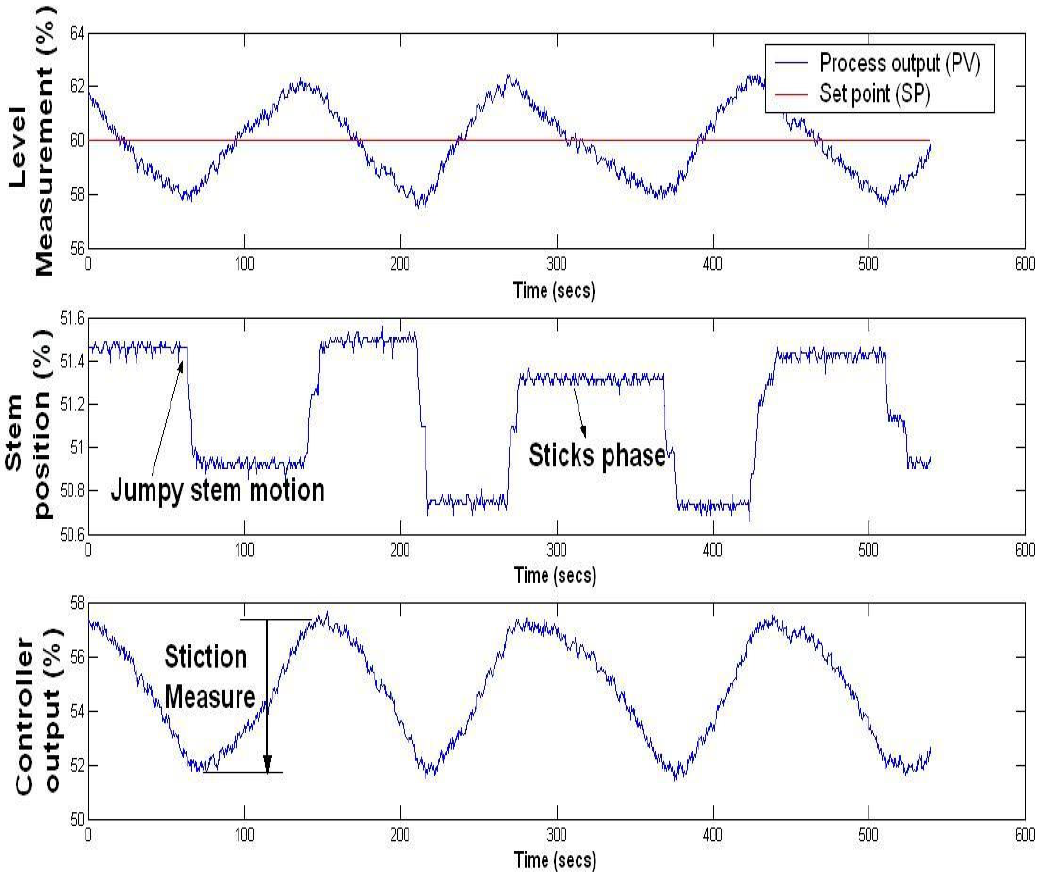
Cascade control of an exothermic chemical reactor [1]
Control stability is affected most by control valves
While the sensors of the process variables are the eyes, and the controller the brain, the final control element represents the hands of the control loop.
The final control element will influence the stability of a loop more than all the other control elements combined.
Control valves are the most common type of final control elements… What… is a control valve? The distinction between automated and control valves is the ability of the latter to modulate or assume an infinite number of throttling travel positions during normal control service.[2]
Control stability is at risk from safety and environmental protection that’s provided by sealing control valve stems with “packing”

Configuration of a pneumatic spring-diaphragm sliding-stem control valve [3]
Packing is a sealing system which normally consists of a deformable material… in the form of solid or split rings contained in a packing box. Packing material is compressed to provide an effective pressure seal between the fluid in the valve body and the outside atmosphere.
Common Packing Problems
- Desire to use just one packing material throughout a plant. The material of choice is normally graphite ribbon packing… Friction increases by magnitudes of 2-5 times.
- Overtightening, which leads to reduced life and high friction.
- Corrosion. primarily of the valve stem. The corrosion destroys the stem finish, which in turn destroys the packing from the inside towards the outside.
- Under-tightening, which normally comes with normal in-service wear, and regular/routine maintenance does not include retightening the packing’s force-loading mechanism. Under-tightening will lead to leakage, which if not corrected immediately, will lead to a complete packing failure rather quickly.[4]
Control stability is disrupted when a control valve has sticky stem packing – “stiction”

Closed loop behavior of a self-regulating level loop in presence of stiction or static friction stick-jump… …a level loop limit cycles due to stiction and the stem jumps to a new position once the controller overcomes the stiction…[5]
Friction is a force that tends to oppose the relative motion between two surfaces that are in contact.
… it usually takes more force to get an element to break out of its static condition and begin moving, whereas less force is usually required to keep it moving.
Static friction is the force that must be overcome before there is any relative motion between the two surfaces. Stick/slip or “stiction” are colloquial terms that are often used to describe static friction. Static friction is one of the major causes of dead band in a valve assembly. Dead band is the range through which an input signal can be varied, upon reversal of direction, without an observable change in the output signal.
Process disturbances… typically… are continually stopping and reversing direction. This means that the control elements also must continually follow this same stop-and-reverse-direction pattern. Every time the control element has to stop, static friction can become a factor.[6]
- Edgar, Thomas F., et al. “Process Control.” Perry’s chemical engineers’ handbook. 8th edition, edited by Don W. Green, McGraw-Hill, 2008, pp. 8-1 – 8-96; p. 8-24.
- Baumann, Hans. “Your best bet in control valves.” InTech 56.7 (July 2009): 35.
- Fang, Lei, et al. “A semi-physical model for pneumatic control valves.” Nonlinear Dynamics 85.3 (2016): 1735-1748.
- Basic operation and function of control valves. Cashco, 2010, p. 56.
- Srinivasan, Ranganathan, et al. “Issues in modeling stiction in process control valves.” 2008 American Control Conference. IEEE, 2008.
- Jury, Floyd D. Control valve impact on loop performance. Technical monograph 49. Emerson Process Management, 2008.